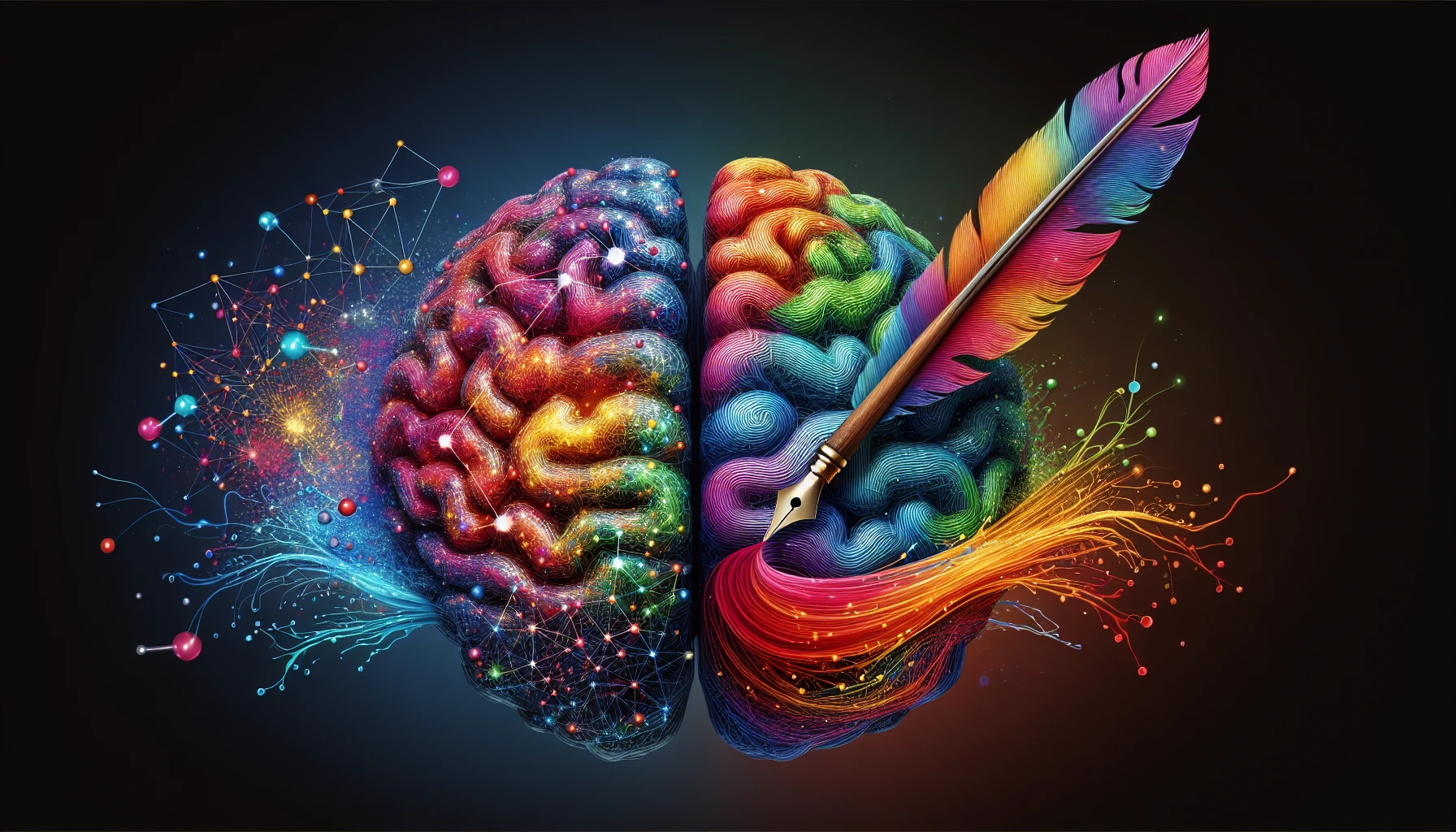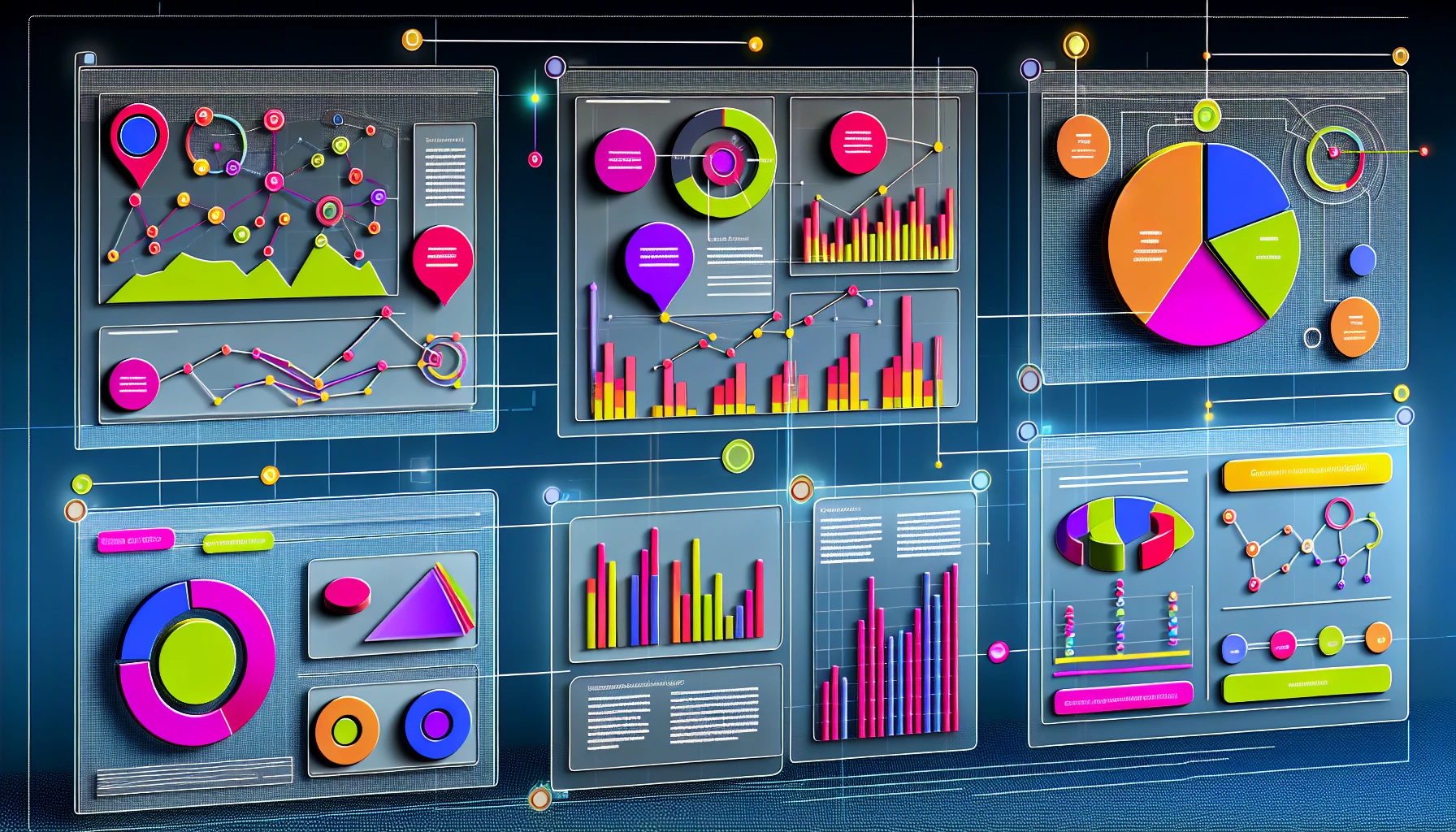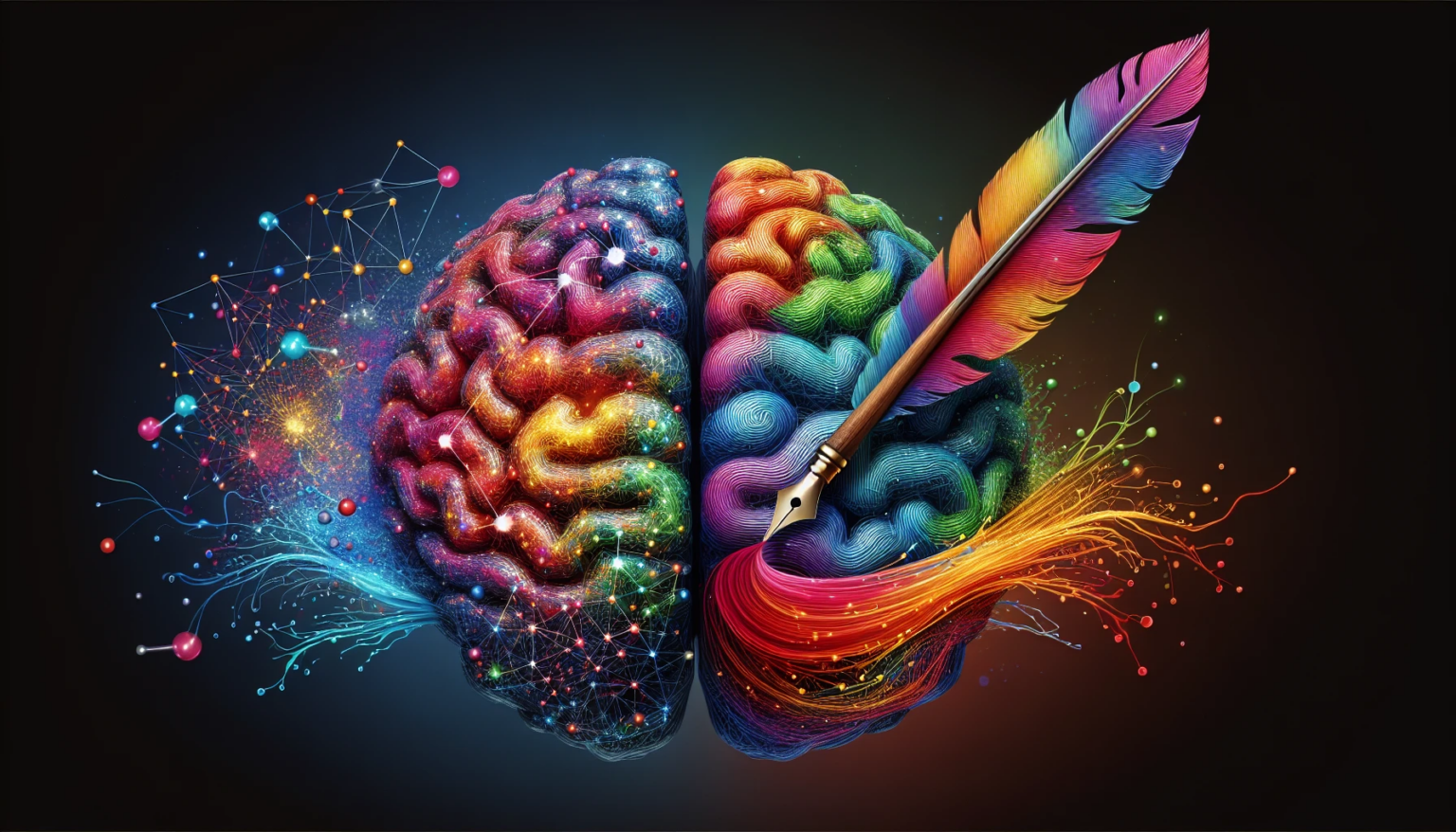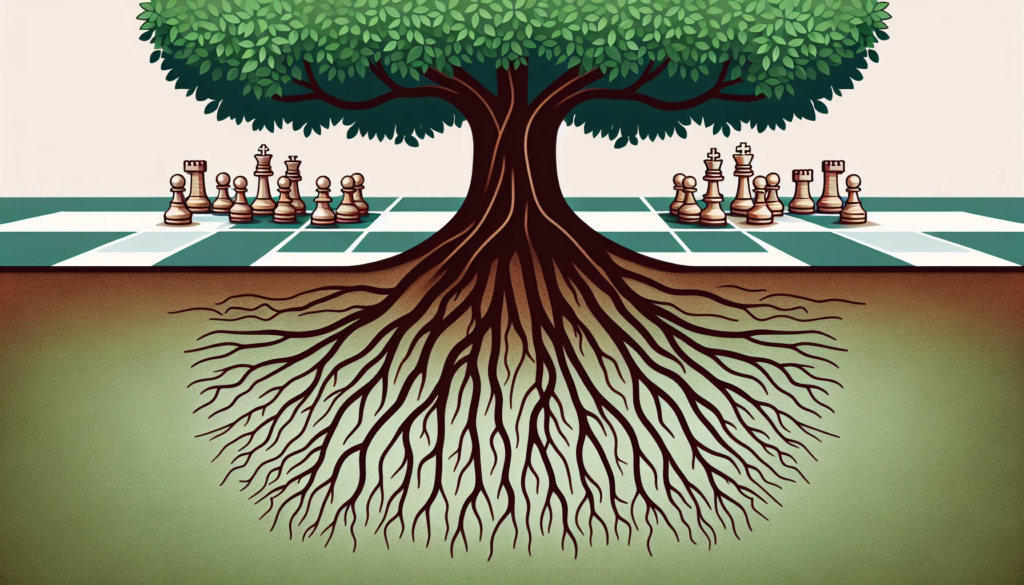Imagine a world where complex data is transformed into engaging, easy-to-understand stories that drive decision-making and inspire action. Welcome to the world of data storytelling – a powerful technique that combines data, narrative, and visuals to create compelling stories that make a lasting impact.
Key Takeaways
Data storytelling combines narrative, visuals and analytics to enable audiences to understand complex data.
Crafting effective narratives involves finding the story within the data, providing context and using visualizations for impact.
Tools such as Microsoft Power BI, Tableau & ThoughtSpot offer a variety of features & visualizations for creating engaging narratives & interactive dashboards that effectively communicate insights.
The Essence of Data Storytelling

Data storytelling, an integral part of data science, involves communicating data through a contextual narrative. At its core, data storytelling consists of three fundamental components: narrative, visuals, and data analytics. When these elements are combined, data storytellers can distill complex information, allowing audiences to engage with the material and make swift, confident decisions. The role of effective communication in data storytelling is pivotal as it guarantees that the audience retains the insights shared by a data scientist.
But what makes a good data story? Effective data storytelling goes beyond merely presenting numbers and charts. It involves uncovering key insights, crafting a compelling narrative, and presenting the data in a visually engaging way. With the right data storytelling skills, data scientists and analysts can create data stories that resonate with their audience, driving decision-making and fostering a culture of data literacy.
The Anatomy of an Effective Data Story
An effective data story consists of a well-crafted narrative, accurate data analysis, and impactful visualizations that work together to convey insights and evoke emotions.
The subsequent pages will examine each of these components in-depth, outlining how to shape the narrative, confirm data accuracy, and choose the most striking visualizations.
Crafting the Narrative
The first step in crafting the narrative is to find the story within the data. To do this, data storytellers must identify the primary elements of a data narrative, such as characters, setting, conflict, and resolution. Context is vital as it helps shape an understandable narrative for the audience. Examples of providing context in data storytelling include identifying correlations that are pertinent to an industry or business segment, and noting anomalies in the data that are affected by external events.
When creating a data story, it is essential to take the audience into account, as it will help assess the technical complexity of the analysis and determine which components of the story will be of interest to the listeners. Visualizations aid the audience’s journey through the narrative elements, augmenting the storytelling experience.
Analyzing for Accuracy
Analyzing for accuracy is an integral part of data storytelling, as it helps uncover insights that generate meaning from the data and establish overarching themes for the data story. Ensuring that the data is relevant, timely, and ethically used to support the narrative is of utmost importance. To verify the accuracy of data in data storytelling, commonly used methods include choosing dependable sources and validating and cleaning the data.
ThoughtSpot’s AI-Powered Analytics is a platform that aids companies in analyzing their datasets, making it a useful tool for data storytellers to swiftly extract significant insights about their data.
Visualizing for Impact
Selecting the most appropriate data visualizations is essential for accurately depicting the findings and providing a clear demonstration of the point being conveyed. When selecting visualizations for a data story, it is essential to consider the type of data being presented and the narrative being conveyed. Tools such as ThoughtSpot, which utilizes AI to offer recommendations for the most suitable visualizations to represent your data, and Liveboards, which are interactive visualizations that can be explored in real time, are available to facilitate the selection of a data visualization.
The selection of visualization can profoundly influence the audience’s perception and understanding of the data. Different visualizations can illustrate different aspects of the data, draw attention to certain patterns or trends, and evoke particular emotions or reactions.
The appropriate visualization can reinforce the narrative, make the data more engaging, and enable the audience to more easily comprehend the key insights and messages.
Unleashing the Power of Data Visualization

Data visualization is key in data storytelling as it distills complex information, making it more digestible and intriguing for the audience. Through the use of data visualization tools, data scientists and analysts can effectively translate complex metrics and relationships into visuals that can be easily understood and acted upon by decision-makers.
By utilizing up-to-date data, data storytellers can guarantee that the analysis is timely and accurately reflects the current state of the subject. This is particularly significant in our rapidly changing world where data-driven decision-making becomes increasingly necessary for organizations to remain competitive and nimble.
The Role of Data Scientists and Analysts in Storytelling
Data scientists and analysts are fundamental to data storytelling as they:
Analyze data
Uncover insights
Collaborate with storytellers to craft compelling narratives
Convey essential insights to stakeholders
Provide context
Articulate ideas efficiently
Unite teams around data
Utilize a structured methodology to communicate data insights with a combination of data, visuals, and storytelling techniques.
The collaboration of data scientists and analysts with storytellers is key to crafting effective data visualizations and narratives. By exchanging insights and discoveries, furnishing data and visualizations, cooperating on visualization design, considering feedback, and conforming to storytelling objectives, data experts can work together to create data stories that resonate with their audience and drive meaningful action.
Data Literacy: Understanding and Interpreting Stories
Data literacy is vital for understanding and interpreting data stories, allowing individuals to make decisions based on the presented insights. It necessitates the skills and knowledge to analyze data, recognize key insights, and present them in a persuasive and comprehensible manner through storytelling techniques. Data literacy is indispensable for producing impactful data stories that resonate with the audience and spur meaningful action.
By cultivating data literacy skills, individuals can effectively sift through large data sets, identify patterns and trends, and extract significant insights. This allows them to make decisions based on data-driven insights rather than relying solely on intuition or suppositions. Data literacy equips individuals to carefully evaluate information, ask pertinent questions, and make decisions supported by evidence.
From Data to Decision: Leveraging Stories for Business Growth
Utilizing data stories for business growth means employing data-driven narratives to sway decision-making, prompt action, and reach strategic goals. Data storytelling can have a positive effect on decision-making in a business by facilitating informed decisions, conveying data-driven insights through narratives and visualizations, expediting decision-making processes, communicating with stakeholders, and ultimately driving meaningful business results.
To leverage data stories for business growth, one must follow these steps:
Identify growth opportunities
Collect and manage data
Craft the narrative
Highlight crucial data
By implementing these steps, businesses can harness the power of data storytelling to optimize marketing efforts, engage target audiences, and foster a culture of data-driven decision-making.
Real-World Examples of Data Storytelling
Real-world examples of data storytelling include interactive dashboards, marketing data journeys, and data journalism initiatives that aim to raise public awareness on various issues, all of which rely on the effective use of raw data.
Interactive Dashboards

Interactive dashboards showcase the power of data storytelling by presenting complex data in an engaging and easily digestible format. They demonstrate the potential of data storytelling by:
Presenting complex data in an engaging and digestible format
Enabling users to quickly and easily understand complex data
Helping users make informed decisions
Key components of a successful interactive dashboard include:
Data integration and ETL processes
Customization and interactive visualization
Real-time reporting and analytics
Advanced filtering and drill-down
A user-friendly interface
By utilizing these features, interactive dashboards can effectively communicate insights, trends, and patterns, helping decision-makers to make more informed choices.
The Journey of Marketing Data

The journey of marketing data illustrates the use of data storytelling in monitoring and optimizing marketing campaigns, resulting in improved outcomes. Data storytelling can improve the efficacy of marketing campaigns by:
Establishing the appropriate context and understanding the target audience
Setting and measuring clear objectives
Aggregating and assessing data to gain valuable insights
Visualizing and narrating the data to create engaging narratives
Delivering and optimizing campaigns based on data-driven insights
The steps in the journey of marketing data generally encompass:
Data acquisition
Data examination
Data stratification
Targeting and customization
Campaign implementation
Performance evaluation
Enhancement
By following this process, businesses can harness the power of data storytelling and business intelligence to track and optimize their marketing efforts, leading to improved results and increased return on investment.
Data Journalism and Public Awareness

Data journalism applies data storytelling to inform and educate the public on significant issues, promoting awareness and instigating change. It achieves this through:
Raising awareness
Stimulating public opinion
Impacting policy decisions
Providing quantitative and accurate information to support narratives
Enhancing public discourse
Encouraging informed decision-making
By fulfilling these roles, data journalism plays an important role in promoting public awareness.
Noteworthy examples of data journalism that have promoted public awareness include data journalism projects that have brought important matters to the public’s attention and raised awareness, such as the war in Ukraine, climate change, and the cost of living crisis. These projects have had a significant role in promoting public awareness and understanding, showcasing the power of data storytelling in informing and educating the public about important issues.
Telling Your Own Data Stories
Telling your own data stories involves collecting and preparing data, choosing the right visualization, and structuring your data narrative to effectively communicate insights.
The subsequent sections will walk you through these steps, offering useful tips and insights for crafting your own captivating data stories.
Collecting and Preparing Your Data
Collecting and preparing data entails:
Assembling pertinent, accurate, and timely data to back your narrative
Utilizing visuals to enhance the storytelling experience
Collecting relevant and timely data that supports the main theme or idea of the story
Adhering to ethical and responsible data practices
To ensure a successful data storytelling experience, it is important to employ these best practices.
To determine the relevance of the data to the narrative in data storytelling, it is essential to:
Listen to the audience to comprehend their needs and interests
Identify the story that needs to be told based on the audience’s preferences
Select the appropriate data that supports and enhances the narrative
Adapt the data to suit the story and emphasize the key insights
Ensure that the data is presented in a way that is easily understandable and relatable to the audience.
Choosing the Right Visualization
Choosing the right visualization involves selecting the most effective visual representation of your data to amplify your story. To determine the most suitable visualization technique for your data story, it is essential to first clarify your purpose and understand your audience. Consider if you are comparing data, showing trends, or revealing patterns, and take into account the level of familiarity with the data and preferences for visual representation of your audience. By doing so, you can select a visualization technique that aligns with your goals and effectively communicates your data story.
Tableau, Microsoft Power BI, and ThoughtSpot are examples of data visualization tools that can be leveraged to create data-driven narratives, visualizations, and interactive dashboards. These tools offer a wide range of visualization options and features, including:
Charts and graphs
Maps and geospatial visualizations
Interactive filters and drill-down capabilities
Storytelling and presentation features
Integration with various data sources
By using these tools, you can effectively communicate your data story and make a greater impact.
Structuring Your Data Narrative
Structuring your data narrative entails arranging your story in a clear and concise manner, ensuring a logical flow that captivates the audience. To do this, data storytellers must:
Begin with an engaging introduction
Provide pertinent context
Utilize visuals to improve comprehension
Structure the narrative with a coherent flow
Conclude with a powerful ending
By taking these steps, you can create a data narrative that is not only engaging and persuasive but also easily comprehensible and relatable to the audience. This will help you to effectively communicate your insights, drive decision-making, and inspire action.
Enhancing Communication Skills for Data Storytellers
Improving communication skills for data storytellers involves:
Honing the ability to communicate complex information in a clear, engaging, and persuasive manner
Soliciting feedback from other data experts
Understanding your audience and tailoring your communication to their level of understanding
Using simple language
Telling a story with the data
Focusing on the key insights to make your presentation more engaging
By honing your communication skills, you can more effectively present data, engage your audience, and convey your insights in a way that resonates and drives action. With strong communication skills, you can transform complex data into captivating stories that inspire change and make a lasting impact.
Tools and Technologies for Data Storytelling
Software and platforms such as Microsoft Power BI, Tableau, and ThoughtSpot serve as tools and technologies for data storytelling, enabling the creation of data-driven narratives, visualizations, and interactive dashboards. These tools offer a wide range of features and visualization options that can help data storytellers effectively communicate their insights and create compelling stories.
Microsoft Power BI is recognized for its user-friendly interface and integration with other Microsoft products, offering a wide range of visualizations and allowing users to create interactive dashboards and reports. Tableau is renowned for its advanced visualizations and data exploration capabilities, providing a wide range of chart types and enabling users to create highly customized and interactive visualizations. ThoughtSpot is a search-based BI tool that allows users to search and analyze data using natural language queries, providing a Google-like search experience and enabling users to get instant answers to their data questions.
By leveraging these tools and technologies, data storytellers can effectively communicate their insights, engage their audience, and create compelling stories that drive action.
Summary
In summary, data storytelling is a powerful technique that combines data, narrative, and visuals to create compelling stories that simplify complex information, engage audiences, and drive decision-making. By leveraging the right tools and technologies, developing effective communication skills, and understanding the key components of an effective data story, data storytellers can create impactful narratives that resonate with their audience and spur meaningful action. So, embrace the art of data storytelling, and let your data tell its story.
Frequently Asked Questions
What is data storytelling?
Data storytelling is the art of crafting narratives with data, contextualizing it, and presenting it to an audience. It involves data analysis and visualization, as well as qualitative and contextual analysis, to effectively communicate to the audience.
What are the 4 elements of data storytelling?
Data storytelling involves the four components of any meaningful narrative arc: character, setting, conflict, and resolution. These elements work together to create a narrative that inspires action and drives business success.
How do data scientists and analysts collaborate with storytellers in creating data stories?
Data scientists and analysts work together with storytellers to exchange ideas, provide data and visuals, collaborate on design, review feedback, and meet storytelling objectives.
What is the importance of data literacy in understanding and interpreting data stories?
Data literacy is vital for understanding and interpreting data stories, providing the necessary skills to make decisions informed by data.
What tools and technologies are available for data storytelling?
Data storytelling can be achieved through the use of software and platforms such as Microsoft Power BI, Tableau, and Looker Studio (Data studio), allowing users to create data-driven narratives, visualizations, and interactive dashboards.



